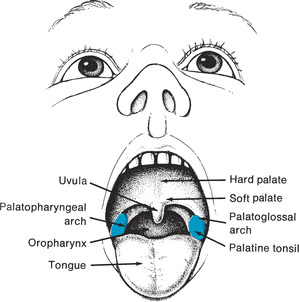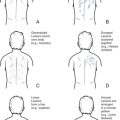Rationale
Although the exact number of cases of child abuse and neglect is difficult to determine because of problems in identification and reporting, estimates place the incidence of child abuse and neglect in the United States at approximately 900,000 cases annually or 12 out of every 1000 children. Neglect constitutes about 40% to 50% of all cases, emotional abuse about 10% to 20%, and sexual abuse approximately 10%. By far, parents are the most frequent abusers of their children. The preeminence of abuse and neglect necessitates that nurses be alert to specific maltreatment indicators when assessing children.
Development of Abuse
Child abuse, defined as intentional physical, psychologic, sexual, or social injury or damage, maltreatment, or corruption of a child, can be traced to parents, siblings, relatives, friends, professionals, and others who encounter the child. Neglect usually refers to intentional or unintentional failure to supply a child with the basic necessities of life.
Familial violence/abuse is generally considered to be the way in which a family system expresses its dysfunction. These families, which demonstrate several common characteristics (Table 23-1), might be geographically and emotionally isolated and tend to discount, deny, or be unaware of the seriousness of their problems. Several factors (see the box on p. 371) can place a family at risk for violence and abuse; awareness of these factors can assist the nurse in assessing families at all stages in family development.
| Characteristic | Manifestations |
|---|---|
| Boundary | Rigid, inflexible. Little contact with outside social support systems. Within the family, there might be blurring of generational boundaries so that a daughter, for example, takes on the role of adult female sexual partner. Parent might seek gratification from child. |
| Affective tone | Helplessness, crisis, anger, powerlessness, depression. Competition for caring. Little empathy or evidence of nurturance, caring. |
| Control | Caring confused with conflict and abuse. Imbalance in power, often male or adult dominated. Members facilitate victim roles. |
| Instrumental functioning | Confusion about roles. Adult and child roles might be reversed. Intense attention to tasks or ineffective performance of tasks. Inappropriate age-related expectations of children. |
| Communication | Poor; double messages, mixed messages. Threats, sarcasm, blaming, demeaning communication. Incongruence in communication. Lack of meaningful communication. Family secrets common. |
| Role stereo-typing | Traditionalist. Rigid. Role confusion, blurring, reversal. Parental coalition limited or absent. |
Assessment of Abuse and Neglect in Children
Assessment of abuse and neglect should be ongoing and an integral part of a total health assessment. Findings that indicate abuse (see the box on p. 372) must be clearly documented and reported. Sexual abuse is more likely to be seen with girls and severe physical abuse with boys. Firstborns are more likely to be abused than those born later, and children with disabilities are at risk for abuse. Care must be taken to describe, not interpret, behaviors and communications. In assessing for abuse, it is important to accurately describe findings and to be alert to whether reports of injury are congruent with the child’s age and the events (e.g., a newborn cannot roll across a bed). If a child indicates that abuse has occurred, the child’s report must be accepted and the child must be shown acceptance, unconditional positive regard, and active listening. Further exploration of abuse in the young child can be facilitated by trained professionals through play, particularly through drawings and dramatic activities.
History of childhood abuse, neglect, deprivation in parent(s)
Decreased knowledge of parenting skills and normal child development
Parental age at time of child’s birth younger than 18 years
Low level of educational attainment (parent education less than 12 years)
Marital discord
Interspousal violence
Parental separation
Parent living alone or in unstable relationship
Unstable socioeconomic conditions, including homelessness, low income, poverty, lack of steady employment, and frequent moves
History of parental substance abuse/chemical dependency within past 6 months
Depression or emotional illness of mother (during pregnancy) or of parents
Poor or delayed parent/child attachment
Violent older siblings
Chronically ill parent(s)
Diminished self-esteem in parent(s)
Blended family
Prematurity of infant(s)
Developmental delays in child(ren)
Social isolation
Illegitimacy
Approval of physical force and/or violence within family or culture as way to solve problems
Related Nursing Diagnoses
Fatigue: related to malnutrition, anemia, poor physical condition.
Posttrauma syndrome: related to abuse, serious threats or injury to self or others, witnessing trauma.
Rape-trauma syndrome: related to rape by family member or friend.
Altered parenting: related to compromised family coping, history of being abused, poor problem-solving skills, social isolation, lack of access to resources, change in family unit or circumstances, poor communication skills, preference for physical punishment, lack of knowledge, physical illness, developmental delay, lack of readiness for parenthood, multiple births, difficult delivery, mental illness.
Impaired social interaction: related to absence of available significant others or caregivers, self-concept disturbance, fear, guilt.
Risk for altered development: related to inadequate nutrition, poverty, violence, abuse, brain damage.
Risk for altered growth: related to malnutrition, deprivation, violence, abuse, caregiver maladaptive feeding behaviors.
Knowledge deficit: related to cognitive limitation, information misinterpretation, lack of exposure, lack of interest in learning, unfamiliarity with information resources.
Infection: related to trauma, broken skin, tissue destruction, inadequate secondary defenses.
Impaired physical mobility, secondary to musculoskeletal impairment, loss of integrity of bone structure: related to developmental delay, pain.
Self-esteem disturbance: related to disturbances in body image, role performance, personal identity related to dysfunctional family relationships, physical or sexual abuse.
Sexual dysfunction: related to abuse.
Risk for self-mutilation: related to guilt, abuse, dysfunctional family.
Risk for violence, self-directed: related to social isolation, poor rapport with family, suicidal ideation, despair, lack of social resources.
Risk for violence, directed at others: related to abuse, history of witnessing family violence, suicidal ideation, impulsivity.





